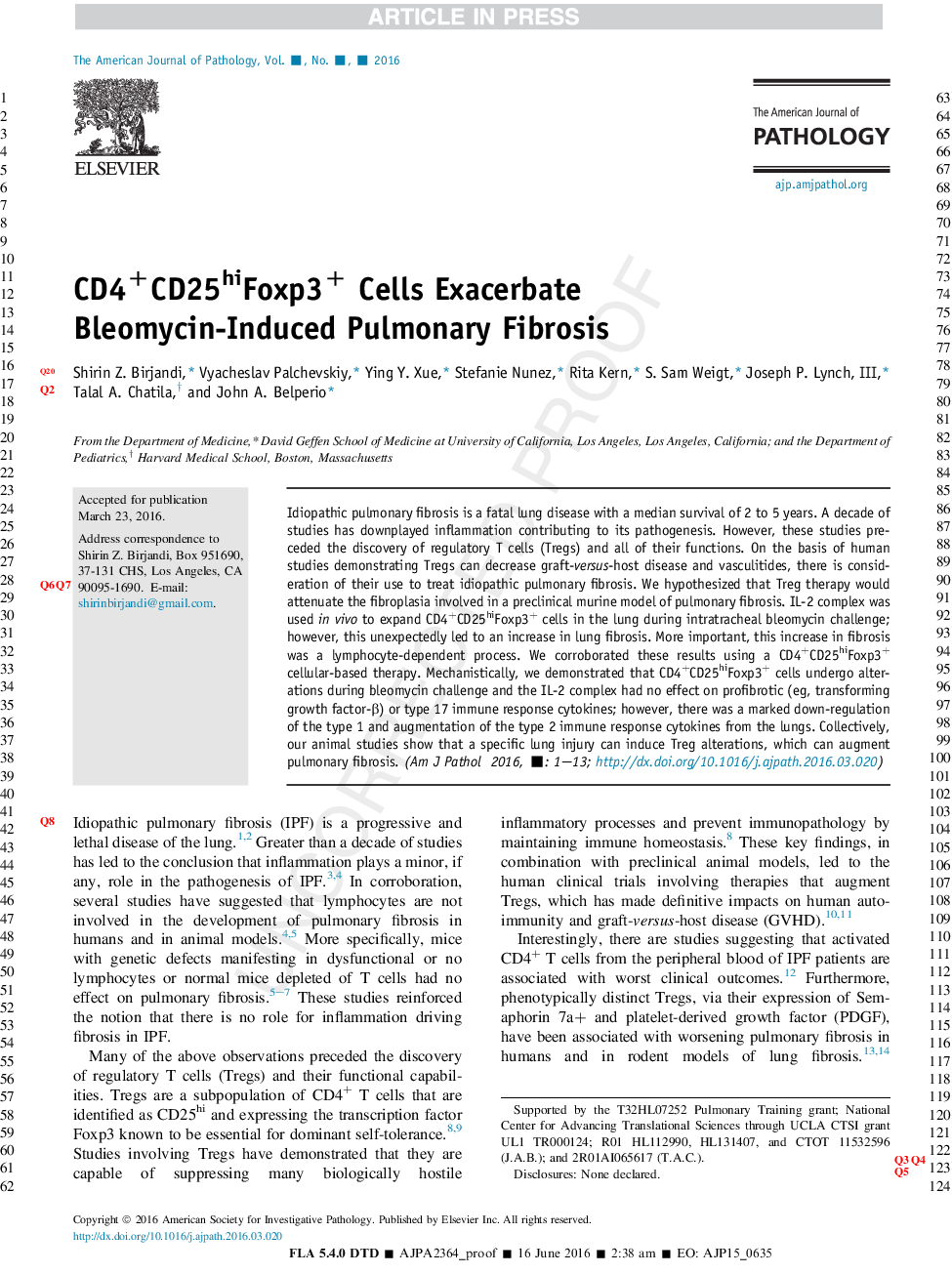| Article ID | Journal | Published Year | Pages | File Type |
|---|---|---|---|---|
| 5932085 | The American Journal of Pathology | 2008 | 13 Pages |
Abstract
Idiopathic pulmonary fibrosis is a fatal lung disease with a median survival of 2 to 5 years. A decade of studies has downplayed inflammation contributing to its pathogenesis. However, these studies preceded the discovery of regulatory T cells (Tregs) and all of their functions. On the basis of human studies demonstrating Tregs can decrease graft-versus-host disease and vasculitides, there is consideration of their use to treat idiopathic pulmonary fibrosis. We hypothesized that Treg therapy would attenuate the fibroplasia involved in a preclinical murine model of pulmonary fibrosis. IL-2 complex was used in vivo to expand CD4+CD25hiFoxp3+ cells in the lung during intratracheal bleomycin challenge; however, this unexpectedly led to an increase in lung fibrosis. More important, this increase in fibrosis was a lymphocyte-dependent process. We corroborated these results using a CD4+CD25hiFoxp3+ cellular-based therapy. Mechanistically, we demonstrated that CD4+CD25hiFoxp3+ cells undergo alterations during bleomycin challenge and the IL-2 complex had no effect on profibrotic (eg, transforming growth factor-β) or type 17 immune response cytokines; however, there was a marked down-regulation of the type 1 and augmentation of the type 2 immune response cytokines from the lungs. Collectively, our animal studies show that a specific lung injury can induce Treg alterations, which can augment pulmonary fibrosis.
Related Topics
Health Sciences
Medicine and Dentistry
Cardiology and Cardiovascular Medicine
Authors
Shirin Z. Birjandi, Vyacheslav Palchevskiy, Ying Ying Xue, Stefanie Nunez, Rita Kern, S. Sam Weigt, Joseph P. III, Talal A. Chatila, John A. Belperio,
